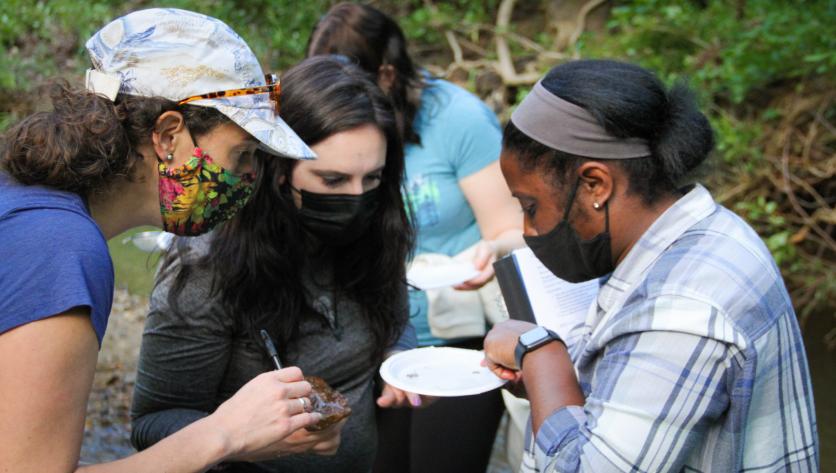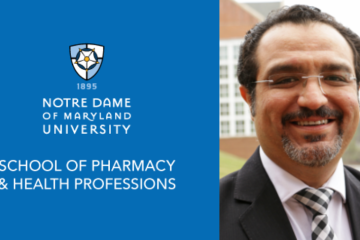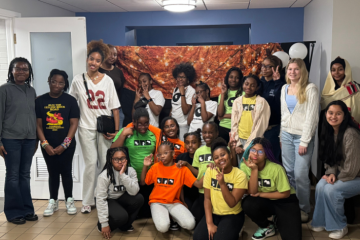Chesapeake Bay Course Gives Students a Hands-on Education

(BALTIMORE, Md.) – A recent trip to Oregon Ridge Park was much more than a nature hike for about 15 Notre Dame of Maryland University students in a course focused on the Chesapeake Bay, the nation’s largest estuary. It was a hands-on lesson to understand how the health of the bay and its tributaries impact the plants and animals that live in the environment.
Led by Notre Dame instructor and environmental educator Claire Cambardella, the introductory biology course gives students the chance to observe firsthand how the environment is impacted by human interaction. Through a combination of fieldwork and lectures, students get to explore the Chesapeake Bay watershed, which encompasses more than 64,000 square miles and six states to provide a unique wildlife habitat.
“This course is an amazing opportunity for students to learn about the ecosystems and environment of a local treasure, the Chesapeake Bay. Meanwhile, they can put into action a variety of skills, such as water testing and fieldwork observation of the organisms that live in the bay,” said Dr. Rebecca Zordan, chair of the Department of Biology. “Every class in the department strives to link the coursework to real-world applications, and the Chesapeake Bay course is no exception.”
The course examines factors that affect the bay’s rich biodiversity and its overall health. During the visit to Oregon Ridge Park, students trekked into the woods to catalogue the bugs and insects found in a stream and to identify the surrounding vegetation. Those data support the students’ scientific analysis of the ecosystem’s health. In addition to expanding students’ awareness of the Chesapeake Bay watershed, the field experiences enrich their learning by enhancing their identity as scientists.
“Hands-on experiences are critical in science classes and can make the information come alive,” said Dr. Zordan. “When students can make their own observations, gather their own data, and to analyze it, students learn about the process of science. They learn how scientists come to conclusions, not just the final fact.”
Established in 1895, Notre Dame of Maryland University (NDMU) is a private, Catholic institution in Baltimore, Maryland, with the mission to educate leaders to transform the world. Notre Dame has been named one of the best "Regional Universities North" by U.S. News & World Report.




